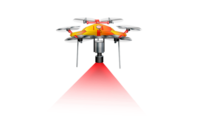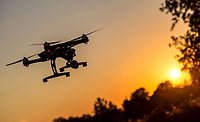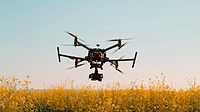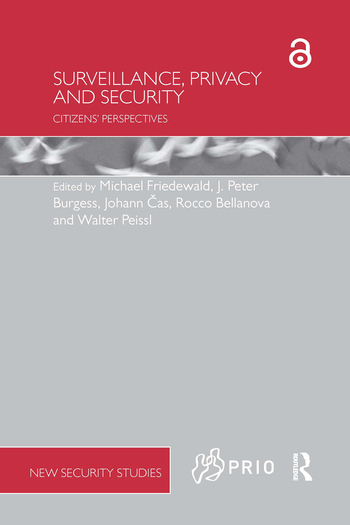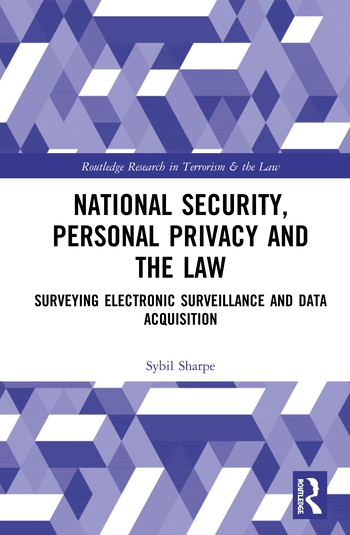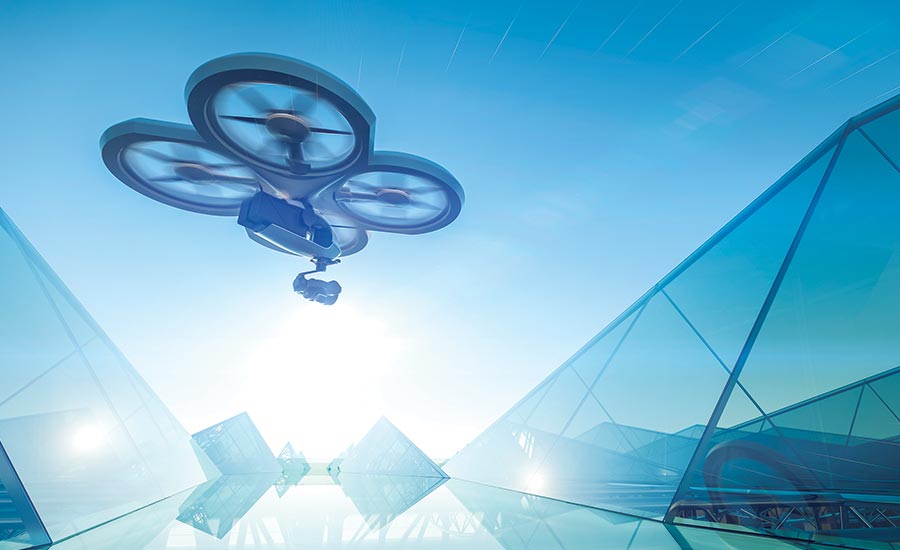Drone Intelligence = Drone Defense
A holistic solution is necessary when it comes to drone defense, to include high sensitivity and high accuracy “drone intelligence.”
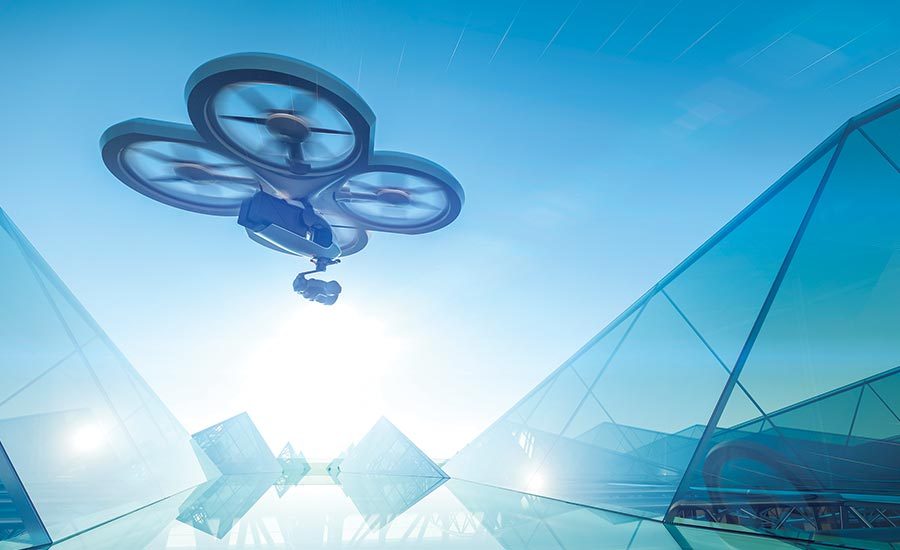

About the Author
Avner Turniansky is VP, Strategy at Vorpal Ltd, an Israeli manufacturer of signal analysis products and solutions for drone detection, geolocation, tracking and mitigation. Turniansky is a signal intelligence specialist, having served a lengthy career with Israel’s prestigious Unit 8200.


Late last year just a few days before Christmas, traffic at Gatwick Airport – the UK’s second largest – was abruptly stopped for three days due to a series of drone sightings. Trending right alongside #sugarcookies and #holidaymovies on social media, the widespread public interest in #GatwickDrone was far greater than the attention given to previous airport/drone episodes, including another drone event at the same airport just a year and half earlier. In fact, the UK’s main air navigation service provider, NATS, made a short public service video about the 2017 incident as a warning to drone pilots of the disruptions they can inadvertently cause by flying in protected airspace. (Watch it at https://www.youtube.com/watch?v=SdfVIdsufI8.) NATS had good reason to produce that video; near-misses between drone and air traffic has increased 400 percent in the UK since 2015. The situation is similarly dire in North America. There has been a 300-percent increase in Canadian airspace during that same time period, and each month, the FAA receives more than 100 drone sighting reports from across the United States.
What made Gatwick’s December 2018 incident so attention grabbing? Beyond the sheer number of passengers inconvenienced (about 140,000), flights cancelled (about 1,000) and large number of drones spotted (93 sightings reported by credible sources), this event stood out because it was an intentionally malicious attack. In fact, it may be the first documented incident in which a drone was used maliciously against a civilian airport other than in an active warzone, like Yemen or Iraq.
We know, for certain, that it won’t be the last. Moving forward, bad actors are sure to be tempted by the increasing availability and affordability of commercial drones, making them an obvious weapon-of-choice. Airports are not the only sites at risk. Drone threats are now top-of-mind for security professionals responsible for critical infrastructure, sporting arenas and other public venues, correction facilities, military installations, ports and waterways, and many other locales. However, airports are in a category of their own – the type of target where “a little drone goes the longest way.” Of course shutting down an airport even for a few hours can incur tremendous inconveniences and business costs that ripple far beyond the airport’s economy. For example, the December incident came with a £15m price tag for EasyJet, just one of the many carriers that service Gatwick. But more significantly, the ability of a small drone to turn a commercial airliner into an explosive projectile is probably the worst possible leveraging of a drone’s destructive potential. It’s no wonder that complete airport shutdown is the uniform, knee-jerk reaction that currently results from any drone sighting.
It doesn’t have to be. With the right strategic approach, and technology to support it, it’s possible for airports to take a more measured and calculated response to drone sightings. Actions could include partial shutdown, changes in runways and intelligent rerouting of flights, as well as quick apprehension of the malicious drone operator. For this to happen, airports must have tools that not only mitigate the immediate threat, but also provide wide coverage of comprehensive “drone intelligence.” Let’s explore what that involves.
Moving Beyond 'Whack-a-Mole'
Drone take-down technologies get a lot of attention, partly because of their inherent “cool factor.” At the 2018 security industry trade exhibition, GSX, one of the most heavily hyped events was the live drone shoot down, held in a gigantic cage at the back of the show floor. The spectacle, which included shooting down a flying drone with a Spiderman-like net, was a big crowd-pleaser.
However, drone mitigation is just one piece of a comprehensive drone-defense strategy and it’s time the security spotlight turns on other, equally important – albeit less sexy – aspects of drone defense. At Gatwick, shooting down the drones would not have reopened the airport any more quickly. As soon as one would have been disabled, another would have appeared, creating a game of “whack-a-mole.” Instead, the airport would have been best served by a more holistic approach – one that may have included mitigation but also provided the situational awareness and “drone intelligence” necessary to get to the root of the problem. When dealing with a malicious operator, stopping the single drone isn’t enough. You need to get the operator as well. The airport could also have benefited from real-time, high-fidelity tracking of each drone’s flight pattern and geolocation of their operator, so as to confidently discern whether the attack was localized enough to allow for partial airport operations to resume.
No Big Red Button
When it comes to drone defense in a non-military environment, there is no single technology equipped to “do it all.” The military makes use of powerful barrage signal jamming, in places like Afghanistan, to create an impenetrable dome above protected sites. These systems can be effective but both impractical and illegal to use in civilian scenarios because of the disruption they cause to electronic equipment. For airports, and other potential civilian targets, there is no “big red button” they can push to stop any and all drones within a very large area, with no impact on local aviation, communications and electronic systems and that poses no risk from the drones themselves as they are immobilized. Instead, customers need to consider the challenges of drone detection, identification, tracking and mitigation as separate components and identify the technologies best suited to accomplish each.
Detecting and tracking drone activity is more challenging than laypeople realize. Airports already have sophisticated radar systems in place, yet these systems are currently incapable of clearly differentiating between a drone and a bird. Relying on them for drone detection would result in far too many false alarms, even at relatively short ranges.
A far superior approach performs detection and geolocation through the passive reception and analysis of RF transmissions between drones and their operators. By positioning specialized sensors around the perimeter of a protected area, and sometimes within, drones can be detected, individually identified, and tracked as they move within the vicinity. Such systems do not require any licensing, regulatory approvals or RF spectrum allocations to be used in a civilian environment. In addition, by intercepting RF transmissions without extracting their content, they also comply with all FCC, cyber and privacy regulations. The value of this cannot be overstated. Laws and regulations in the US, UK and elsewhere, which many security professionals find to be outdated and overreaching, put severe restrictions on how law enforcement and security operations can fight drones. While these will ultimately be updated to catch up with today’s reality, having a system that’s approved to use now, out of the box, is vitally important to the customers investing in it.
Another virtue of RF and waveform analysis is that such systems can geolocate and track not just drones but also their operators. This holds true even if the operator is on the move, piloting the drone from a ground vehicle. This data can be shared with law enforcement, in real-time, allowing them to pursue and apprehend the operator as quickly as possible. This puts a definitive end to the current threat, and by taking the culprit into custody, also eliminates his ability to conduct future attacks. By comparison, if law enforcement sought to identify and track down a malicious operator purely through forensic evidence available from a downed drone, the investigation would be long, costly and not necessarily conclusive.
The Big Picture
A main point to remember, for the aviation industry, is that when it comes to protecting airports, drone defense is not just about securing the property’s perimeter. Drones pose a risk to aviation and passenger safety anywhere within the vicinity of the airport, including to people and property below the take-off and landing glide paths far beyond the airport’s fenced boundaries. A malicious operator, flying a drone high enough, can threaten an aircraft that’s more than several miles away from the landing strip. Therefore, it’s critical to consider solutions that have long range coverage, while maintaining accuracy with near-zero false alarms. RF monitoring technologies can deliver on these requirements.
Ultimately, the ideal drone defense solution combines “drone intelligence” as well as mitigation technologies. Integration between these systems closes the OODA loop (observe-orient-decide-act), providing deep situational awareness and an enhanced ability to direct operations related to drone take-down. With precise geolocation data, nets or short-range jamming can be deployed in a highly targeted manner, offering more predictable results and less potential for collateral damage.
Fortunately for security teams tasked with drone defense, there are a growing number of manufacturers offering solutions. Research your options well. Just like any security investment, considerations should include pricing, deployment, operation, ROI and TCO and other metrics. So should be the question of how the technology fits within current legal operational guidelines. Most importantly, keep in mind the need for a holistic solution, comprising multiple elements, and make sure that high sensitivity and high accuracy “drone intelligence” is part of that equation. The future of air safety depends on it.
Looking for a reprint of this article?
From high-res PDFs to custom plaques, order your copy today!



